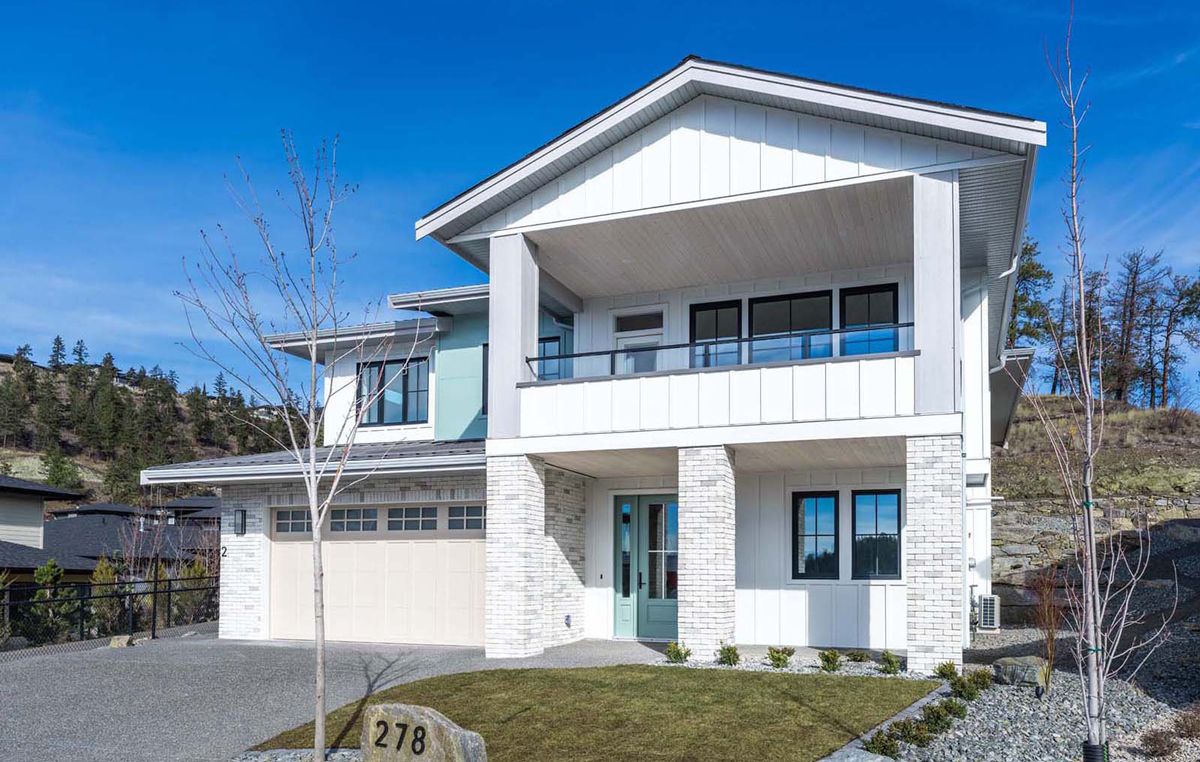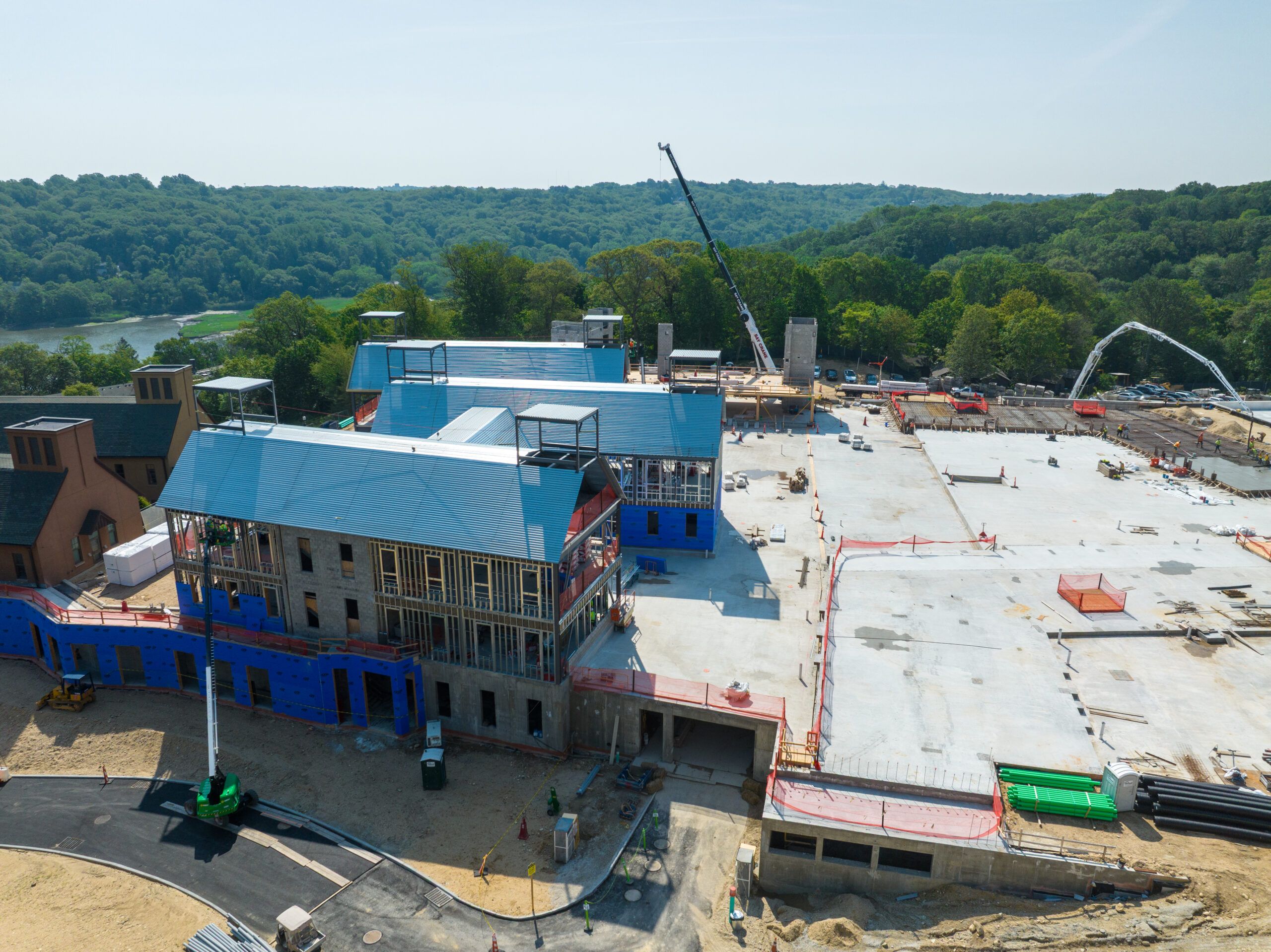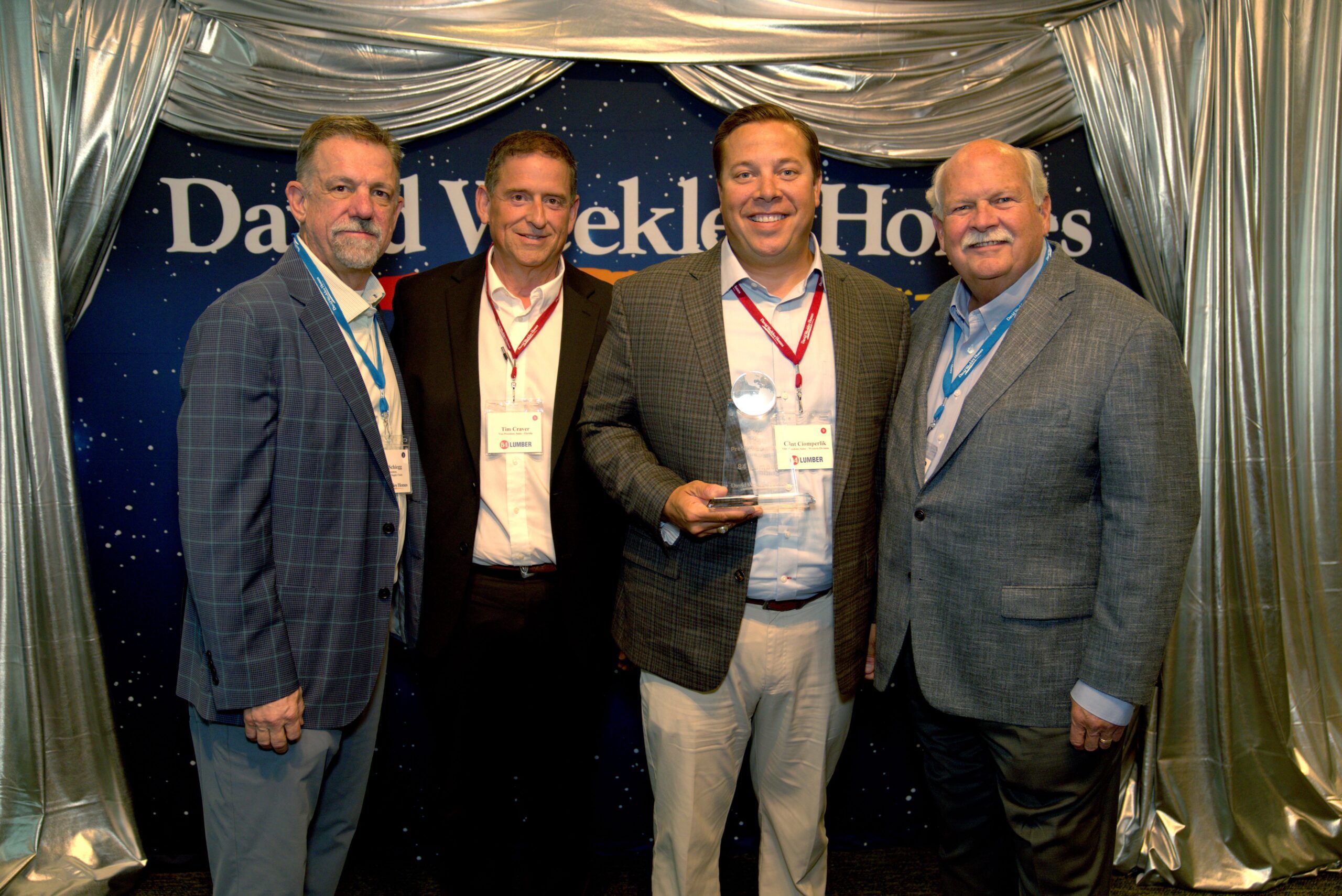What if the future of sustainable living wasn’t just energy-efficient, but actually carbon-negative? That’s the question Wilden, a forward-thinking developer in British Columbia, is answering with one of Canada’s first hemp-insulated homes. Designed to challenge what’s possible in residential construction, the net-zero ready home blends smart design with a surprisingly old-school material: hemp.
Fast-growing, naturally insulating and incredibly efficient, hemp does more than regulate indoor temperatures; it actively reduces the home’s carbon footprint by pulling CO₂ from the atmosphere. Over its lifetime, this one home alone will offset more than 1,400 kilograms of carbon. That’s the climate equivalent of keeping 1,600 pounds of coal from being burned.
But Wilden’s real goal goes beyond building better walls. This home is a test case for how sustainability, wellness and innovation can meet in one thoughtfully designed space—no trade offs required. From healthier indoor air and moisture control to soundproofing and long-term durability, the benefits go deeper than energy savings. This is about setting a new bar—and building homes that truly give back.
We sat down with Karin Eger-Blenk, CEO and co-chair of the Wilden Group, to get his insights on the design process, the benefits of building with hemp and why carbon-negative solutions may be key to achieving true net-zero in the years ahead.
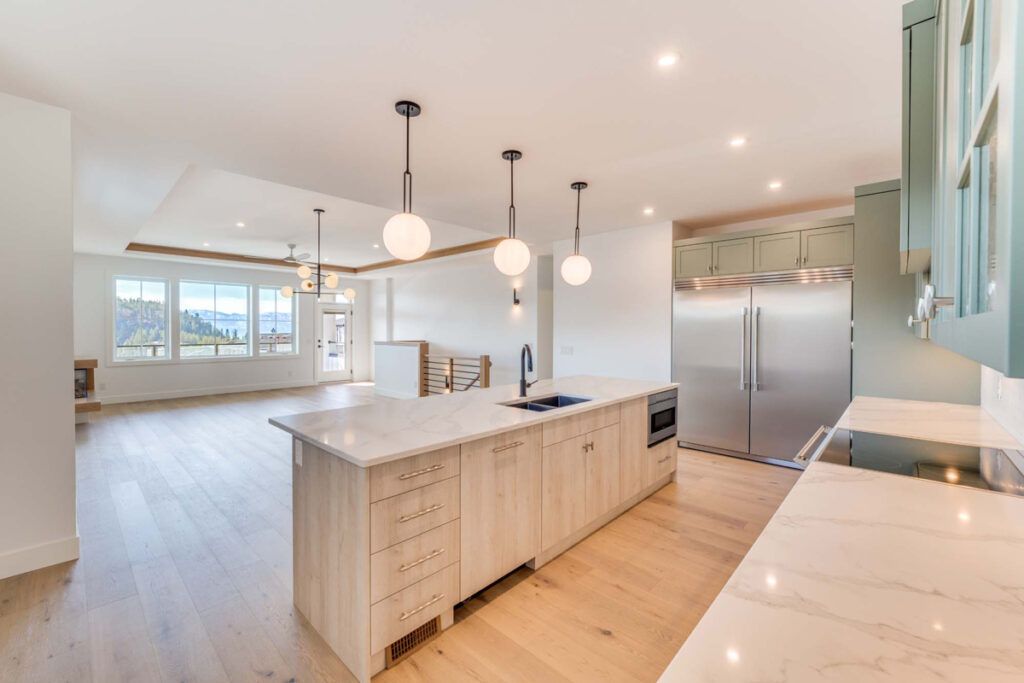 Give us a snapshot of the Wilden brand?
Give us a snapshot of the Wilden brand?
Wilden is a sustainably minded developer and Kelowna’s largest master-planned community, designed to seamlessly integrate with nature while leading the way in sustainable building practices. As a family-owned development, Wilden is built with a long-term vision, ensuring that growth happens responsibly and sensitively.
With a strong commitment to preserving green spaces, Wilden creates vibrant, connected neighbourhoods that promote an active outdoor lifestyle. Every project—whether single-family homes, townhomes or future commercial spaces—is thoughtfully designed to exceed energy efficiency standards and minimize environmental impact.
A key milestone in this commitment is the introduction of hemp insulation in net-zero homes. By integrating natural, high-performance materials, Wilden is redefining sustainable construction—prioritizing lower carbon emissions in building materials and practices. Sustainability is more than a principle; it’s the cornerstone of a future-focused, environmentally responsible community built to last.
What type of consumers are you targeting?
Wilden appeals to homebuyers who prioritize sustainability, energy efficiency and long-term quality. The community attracts families, young professionals, and retirees who seek a well-balanced lifestyle that offers access to nature and a strong sense of community. Wilden also caters to forward-thinking homeowners who want to reduce their environmental footprint while maintaining healthy comfort and convenience.
How does the overall design—i.e., the use of hemp—cater to what today’s consumers are looking for?
Today’s homeowners prioritize energy-efficient, environmentally responsible, and healthier living spaces. This home meets those expectations by integrating hemp insulation, a carbon-negative, non-toxic material that enhances thermal efficiency and indoor air quality.
Unlike traditional insulation, hemp is low in VOCs (Volatile Organic Compounds—chemicals that easily become airborne at room temperature and can affect indoor air quality), free from synthetic toxins and non-allergenic, making it a healthier choice.
Built to B.C. Energy Step Code 5 standards, the home is net-zero-ready, with airtight construction, high-efficiency heating and cooling, and EV-charging infrastructure. It also is ready and optimized for solar panels. The future home-owners can apply for up to $40,000 of the federal interest-free loan for solar installations, taking the home to full net zero. The panels will generate all the power needed to operate the home—or more.
What specific technical challenges did Wilden face when implementing hemp insulation in this project compared to conventional insulation materials?
Hemp insulation was a relatively new material for us, so verifying it met the required insulation values and flame-spread ratings was vital before we made a commitment. We conducted thorough evaluations to ensure it complied with building codes and overall project requirements.
How does the R-value of the hemp insulation used in this project compare to traditional fiberglass or spray foam options? What implications does this have for the building envelope design?
Per inch, hemp insulation provides a slightly lower R-value than fiberglass. However, because our design included a service cavity, we compensated for the difference by replacing the standard poly vapor barrier with a one-inch Quick Therm layer. When paired with additional insulation in the service cavity, the wall assembly achieves an R-value of 35.
For thicker walls, moisture management can be a concern. Hemp’s breathability and mold resistance help mitigate these issues. We also chose plywood over OSB, applied a high-performance, water-vapor-permeable air and weather barrier and used plywood strapping. These measures help the wall system dry out if moisture condenses inside, maintaining overall durability and performance.
What modifications, if any, were required in standard construction practices to properly install and maximize the performance of hemp insulation?
Hemp’s fibrous nature makes it more challenging to cut than typical insulation materials. Despite the extra effort required, installers appreciated that hemp insulation is non-abrasive, non-toxic and non-irritating, offering a healthier and more comfortable work environment.
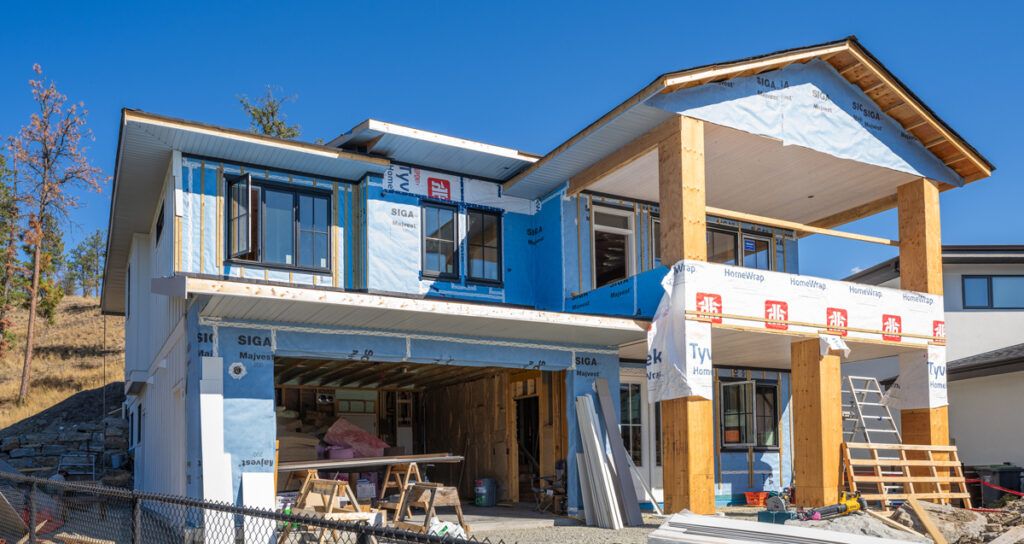 Beyond the environmental benefits, how has the use of hemp insulation affected the overall project timeline and construction costs?
Beyond the environmental benefits, how has the use of hemp insulation affected the overall project timeline and construction costs?
Because hemp insulation does not compress or package as neatly as fiberglass, ordering and storage logistics were slightly more complex. Although these factors introduced additional shipping costs, the overall expense remained comparable to a similar home built to Step Code 5 standards. The project timeline was not significantly impacted.
What testing or certification processes did the hemp insulation undergo to meet building code requirements in Canada?
The home was built to B.C. Energy Step Code 5 standards, representing the highest energy efficiency level in the province. To meet this, all materials—including the hemp insulation—complies with strict performance criteria related to thermal efficiency, airtightness and moisture management.
How is the moisture regulation capability of hemp insulation being leveraged in the specific climate conditions of this project location?
Kelowna’s warm summers and cold winters require effective moisture management. Hemp insulation naturally regulates moisture, preventing mold growth and enhancing indoor air quality. Since this home was built with airtight construction, hemp insulation works in tandem with high-efficiency ventilation systems to maintain a healthy and energy-efficient indoor environment.
What mechanical systems were selected to complement the hemp insulation’s performance characteristics in achieving net-zero ready status?
The home includes:
- An air-source heat pump with a small gas furnace backup for efficient heating and cooling
- A heat pump water heater to reduce natural gas reliance and energy costs
- A solar-optimized roof for future net-zero capability
- EV-charging readiness, supporting sustainable transportation
- These systems work together with the airtight building envelope to enhance energy efficiency and reduce environmental impact
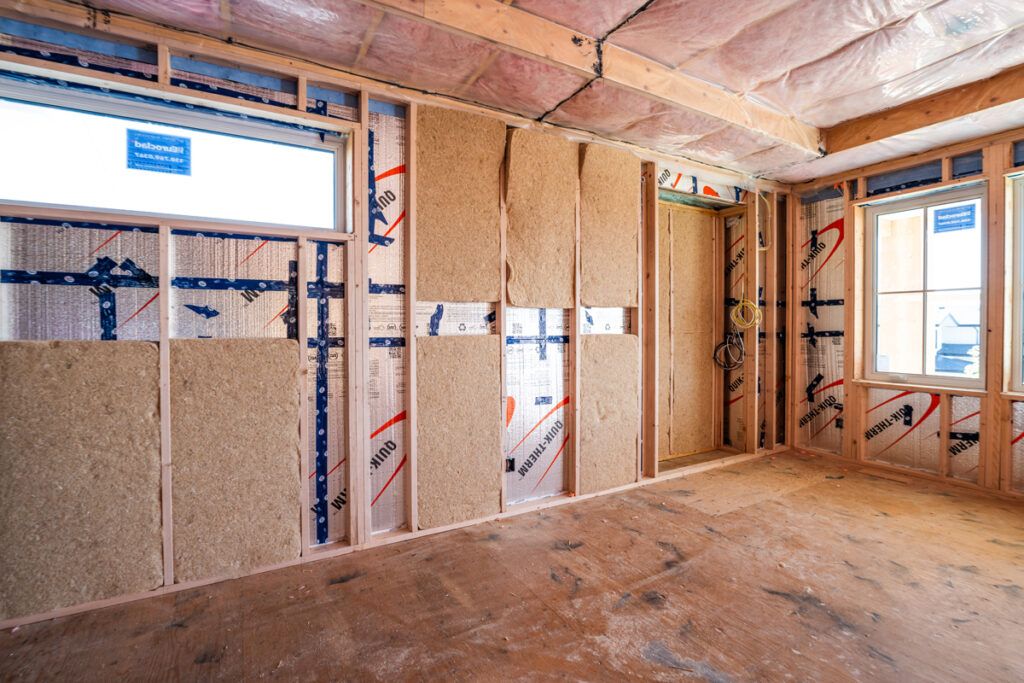 How is Wilden addressing potential contractor or subcontractor unfamiliarity with hemp insulation during the construction process?
How is Wilden addressing potential contractor or subcontractor unfamiliarity with hemp insulation during the construction process?
Wilden ensures all contractors and subcontractors are informed about hemp insulation during kick-off meetings and throughout the integrated design process (IDP). Aside from familiarizing themselves with the unique wall assembly, tradespeople do not experience significant differences compared to working with conventional insulation materials.
What specific metrics or monitoring systems have been implemented to track the actual carbon sequestration and energy performance of the home over time?
Hemp insulation naturally sequesters carbon, absorbing one and one-half to two times its weight in CO₂ during its rapid three- to four-month growth cycle. The home’s airtight construction and high-efficiency systems ensure energy performance can be tracked through utility consumption and air exchange rate testing.
How does hemp insulation integrate with other sustainable building materials or systems in this project?
Hemp insulation is part of a holistic, sustainable home design, in conjunction with:
- Airtight construction, which minimizes energy loss and improves efficiency
- A solar-optimized roof, allowing for future net-zero operation
- High-efficiency heating, cooling and ventilation systems reduce overall energy use
- By combining these elements, the home reduces environmental impact, improves comfort and supports long-term cost savings
What considerations were made regarding the fire resistance properties of hemp insulation, and how does it compare to conventional alternatives?
We confirmed that the hemp insulation complied with ASTM S703 standards for smolder resistance. All relevant documentation was submitted during the building permit process and for insurance requirements, ensuring the product aligns with conventional insulation in terms of fire safety.
Based on this project experience, what scalability challenges need to be addressed for hemp insulation to become mainstream in North American residential construction?
Scalability challenges include supply chain limitations, industry awareness and regulatory alignment. Expanding hemp insulation production, educating builders and ensuring continued compliance with building codes will be essential for widespread adoption. As more developers integrate sustainable materials like hemp, increased demand will help drive greater availability and cost efficiency.
Interview by Michael J. Pallerino, editor of Commercial Construction & Renovation magazine. Over the past 30-plus years, he has won numerous awards, including the “Jesse H. Neal Editorial Achievement Award,” recognized as the Pulitzer Prize for business-to-business magazines. He can be reached at mikep@ccr-mag.com.
 One-on-One with… Wilden Group’s Karin Eger-Blenk
One-on-One with… Wilden Group’s Karin Eger-Blenk
Describe a typical day.
My work at Wilden combines strategy, innovation and land maintenance. I divide my time between planning with my team, engaging with our community, exploring new approaches to sustainable home building and ensuring nature preservation and fire mitigation on our land. I also love sharing the Wilden lifestyle with our residents, ensuring that every project reflects our long-term vision and values.
What was the best advice you ever received?
One of the most important lessons I’ve learned is the value of long-term thinking—whether it’s in building a community, protecting the natural environment, or continuously innovating to improve how we live. My dad, Gerhard Blenk, who was the original land owner and visionair of Wilden, taught me to “steer the ship with a calm hand”, even when times are rocky.
Another famous quote of my dad is: “I have seen them print money, but I have never seen them print land.” When talking to prospective buyers of home sites and townhomes, I can always assure them that their investment in Wilden is as safe as can be. After all, the family who owns the land also lives here, and considers every step in its development and preservation very mindfully.
What’s the best thing a client ever said to you?
Hearing directly from homeowners is one of the most rewarding parts of my work. I love when residents tell me that living in Wilden has transformed their perspective on sustainable living, giving them not just a home, but a deeper connection to their environment. Those moments remind me why Wilden is so much more than a development—it’s a place where people can thrive.




